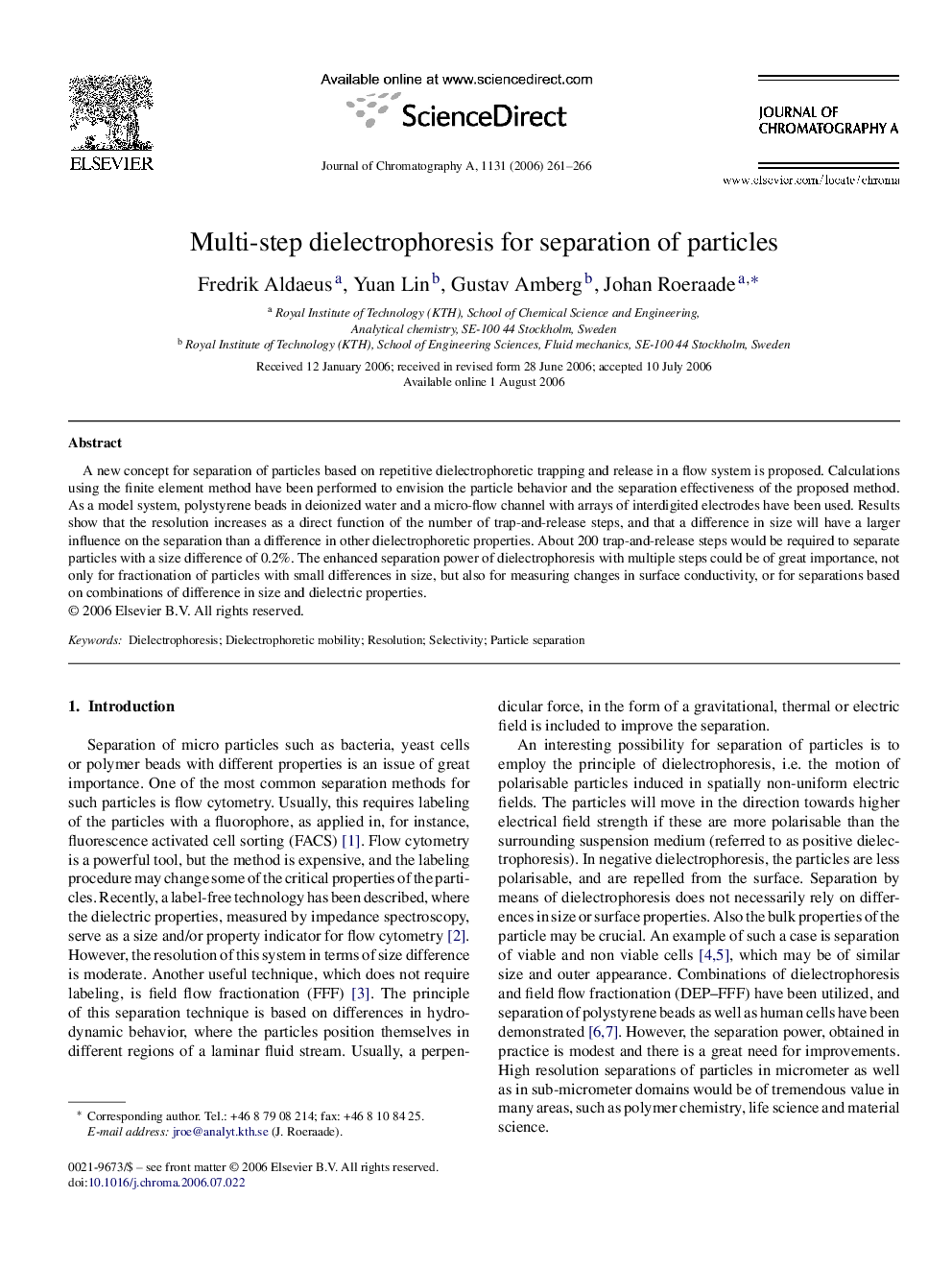| Article ID | Journal | Published Year | Pages | File Type |
|---|---|---|---|---|
| 1211366 | Journal of Chromatography A | 2006 | 6 Pages |
A new concept for separation of particles based on repetitive dielectrophoretic trapping and release in a flow system is proposed. Calculations using the finite element method have been performed to envision the particle behavior and the separation effectiveness of the proposed method. As a model system, polystyrene beads in deionized water and a micro-flow channel with arrays of interdigited electrodes have been used. Results show that the resolution increases as a direct function of the number of trap-and-release steps, and that a difference in size will have a larger influence on the separation than a difference in other dielectrophoretic properties. About 200 trap-and-release steps would be required to separate particles with a size difference of 0.2%. The enhanced separation power of dielectrophoresis with multiple steps could be of great importance, not only for fractionation of particles with small differences in size, but also for measuring changes in surface conductivity, or for separations based on combinations of difference in size and dielectric properties.
